8 ans d'expérience sur 2 pages A4
Pour les conventionel∙les et les procédurier∙es, mon CV est dispo là, en échange de ton petit mail 👉
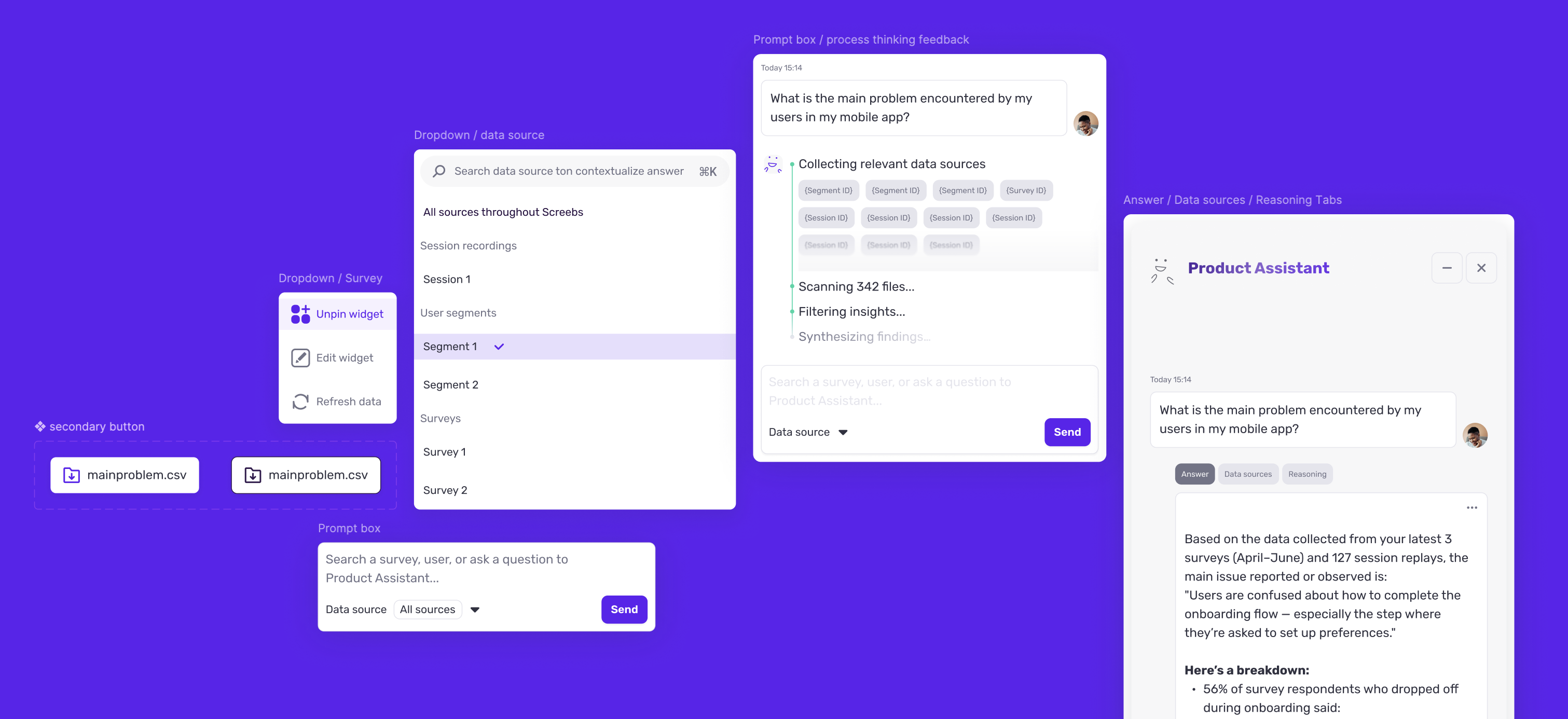
When sending a survey to a specific user segment, product teams could only apply filters based on a single event, without the ability to specify contextual details.
I designed an extension to the filter system that allows users to select an event, a related property, and an operator, while providing real-time feedback on audience size, all without cluttering the interface.
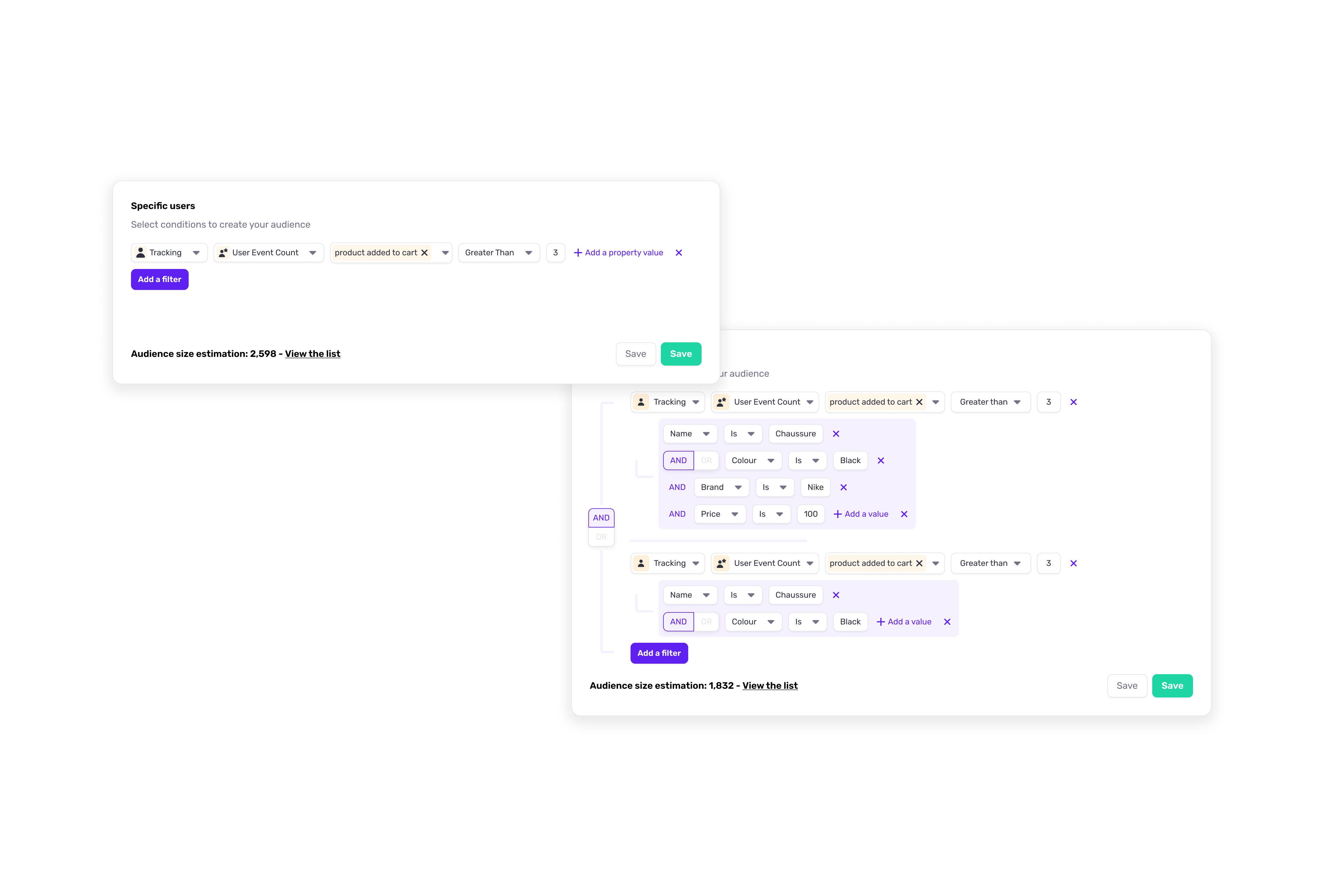
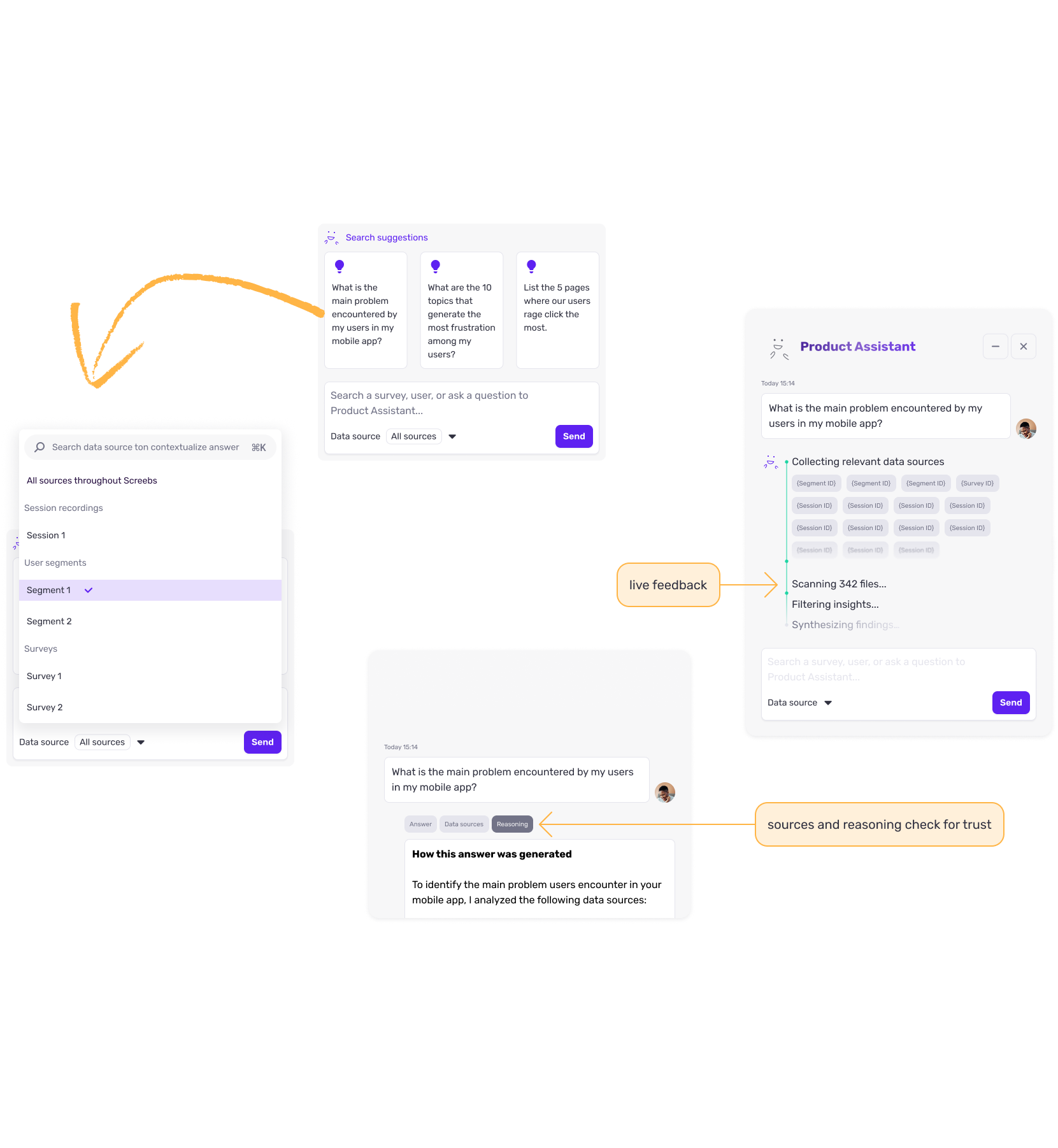
Screeb’s users, primarily Product Managers, have grown used to conversational interfaces that let them find insights quickly through natural language. This type of interaction is a major time-saver.
To meet these expectations, Screeb wanted to launch a new AI feature: a Product Assistant capable of analysing any dataset across the platform.
This raised several design challenges:
The Product Assistant suggests useful prompts based on context (to drive adoption), answers natural language questions, adapts to the current page (context-aware), displays its reasoning to build trust, and proposes next steps.
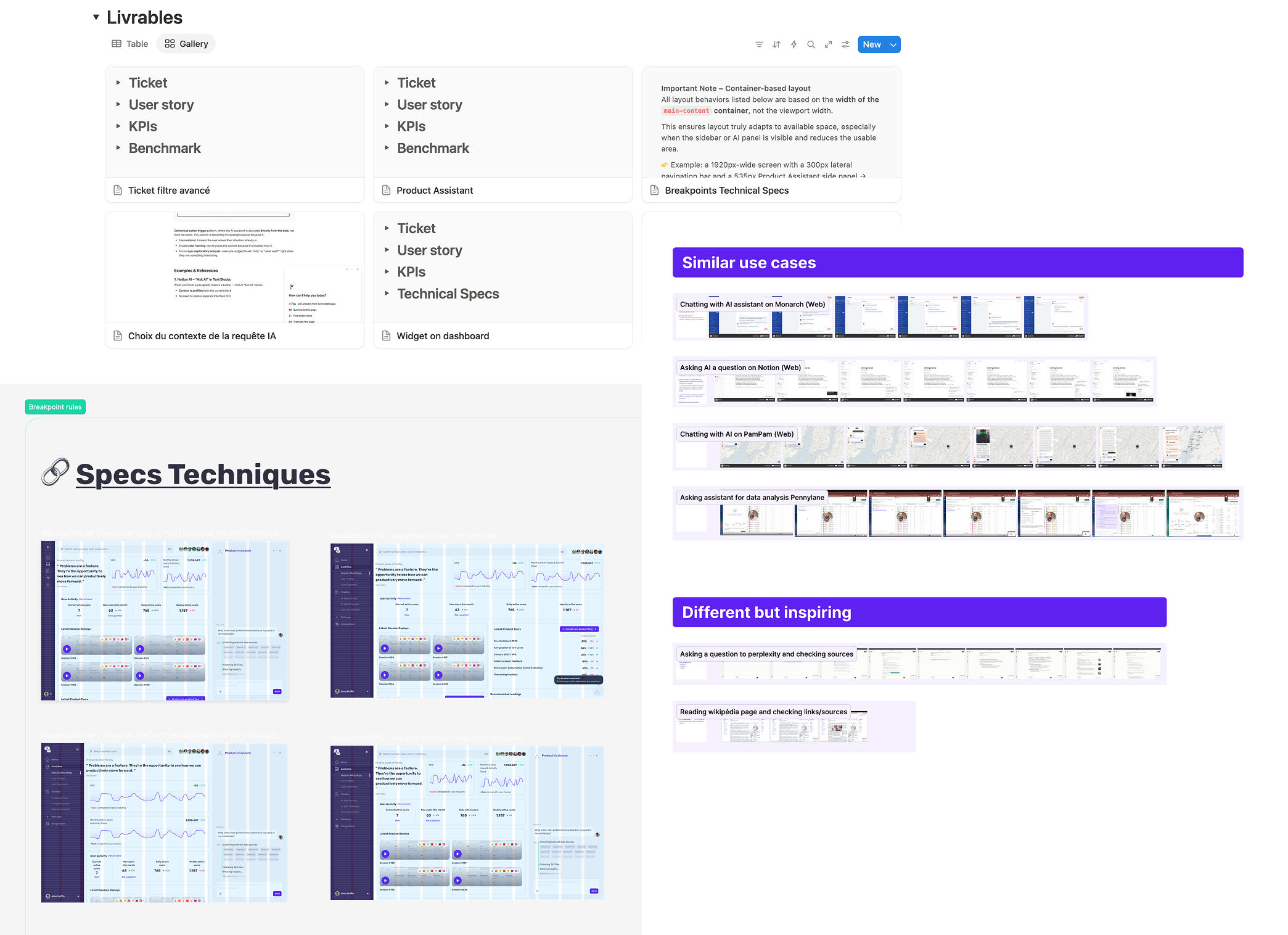
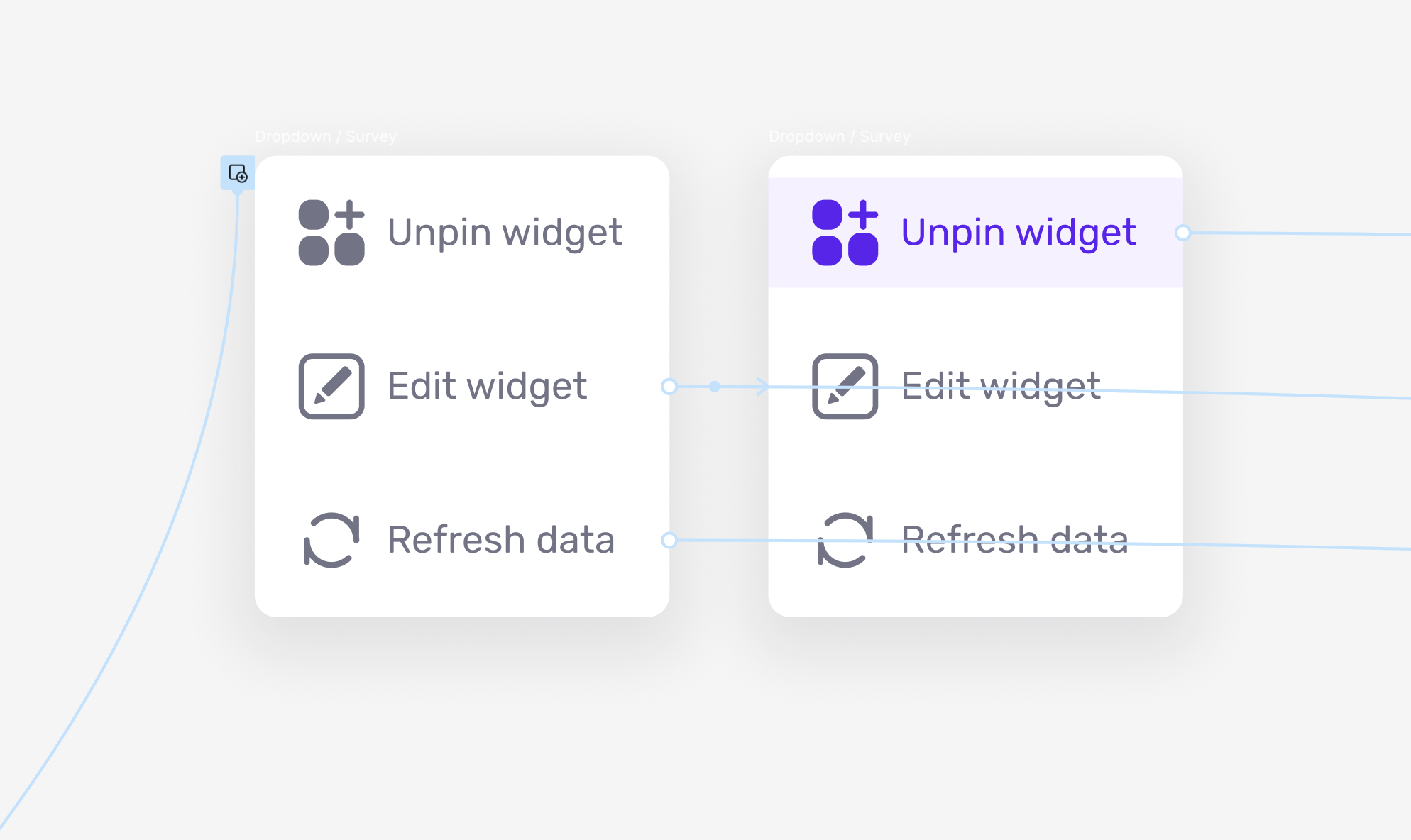
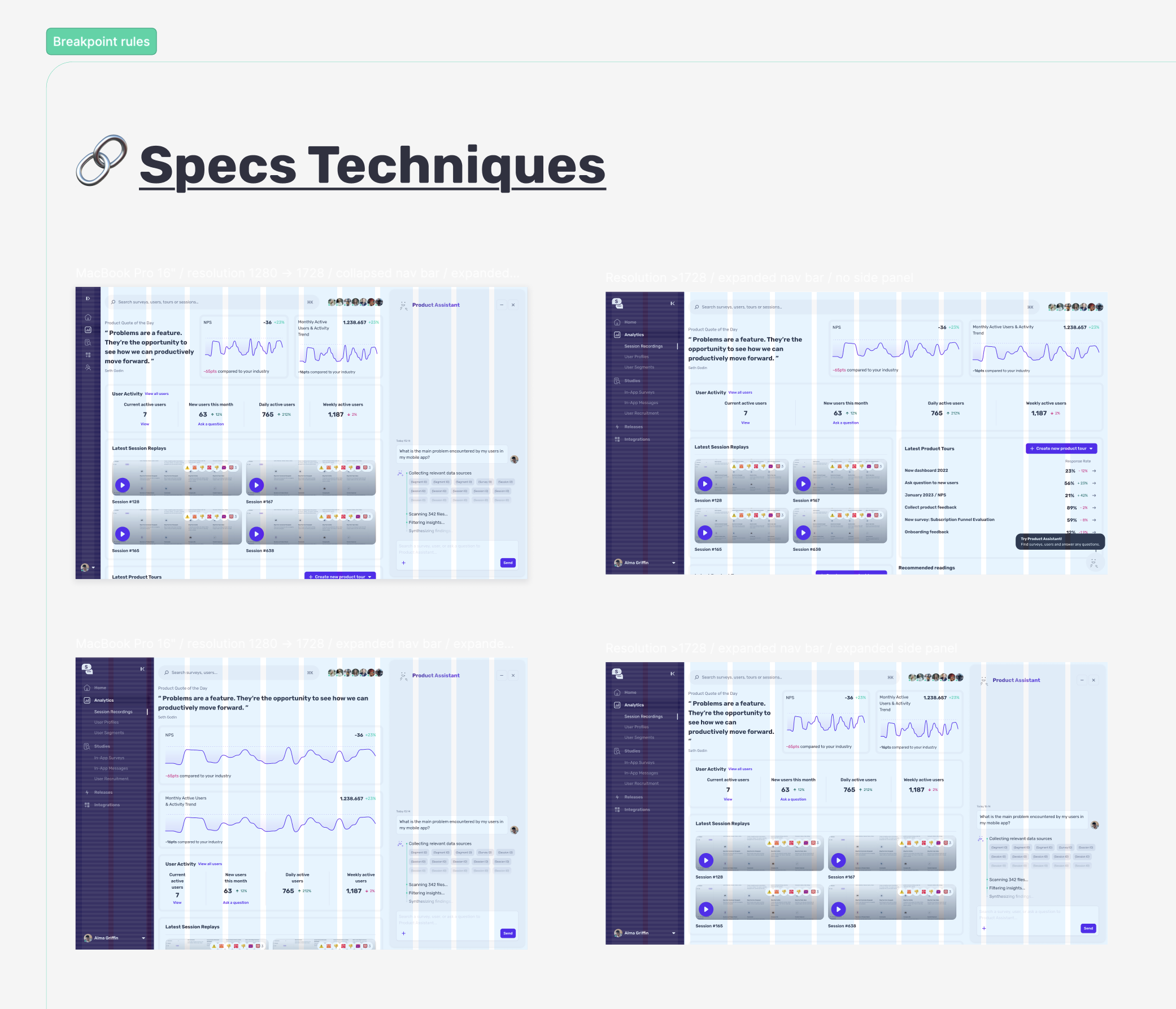
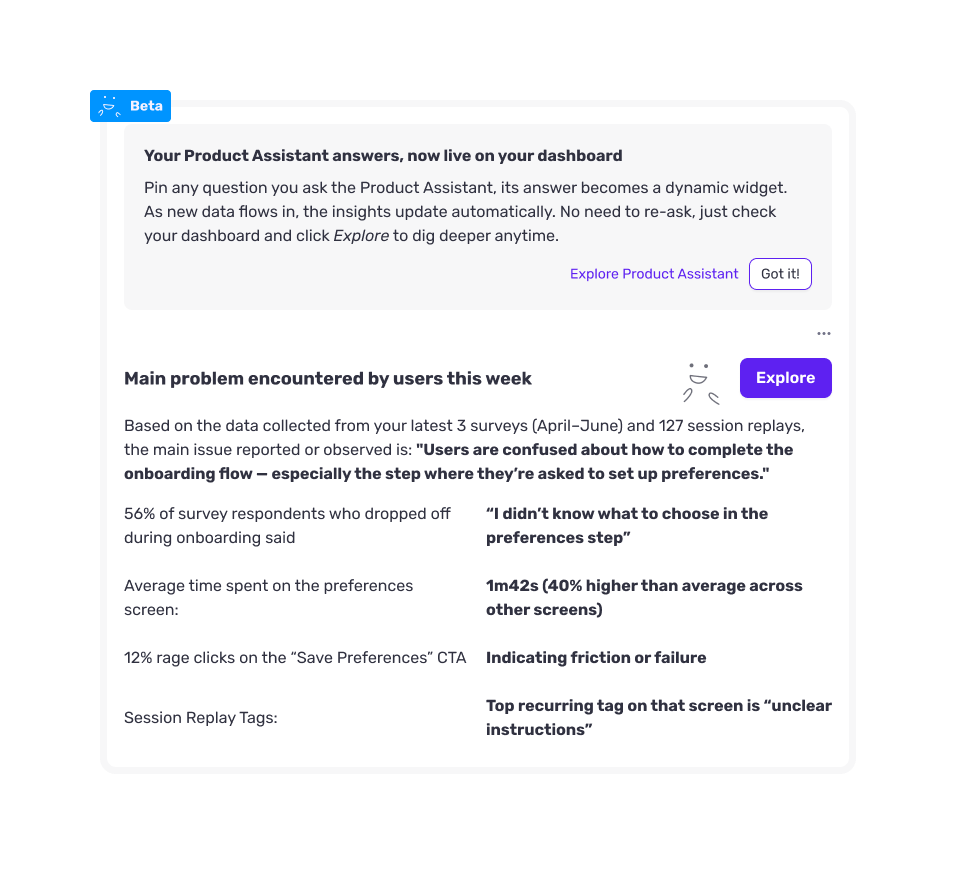
The dashboard widget was designed as a direct response to these questions. First, it proactively brings relevant insights to users, without them having to search, by displaying key data the moment they land on Screeb. The homepage becomes a gateway to product knowledge.
Second, the widget helps users save time: instead of typing the same queries or reopening the assistant to find a previously answered question, they get instant access to updated answers to recurring topics.
Finally, the widget serves as a trigger for Product Assistant adoption: the assistant’s icon is embedded in the widget, along with a CTA that encourages users to dive deeper or ask a follow-up question, gradually building a new habit in their product workflow.
Since the product update, early results show:
We’re continuing to monitor the impact over time and remain attentive to user feedback to guide future improvements.